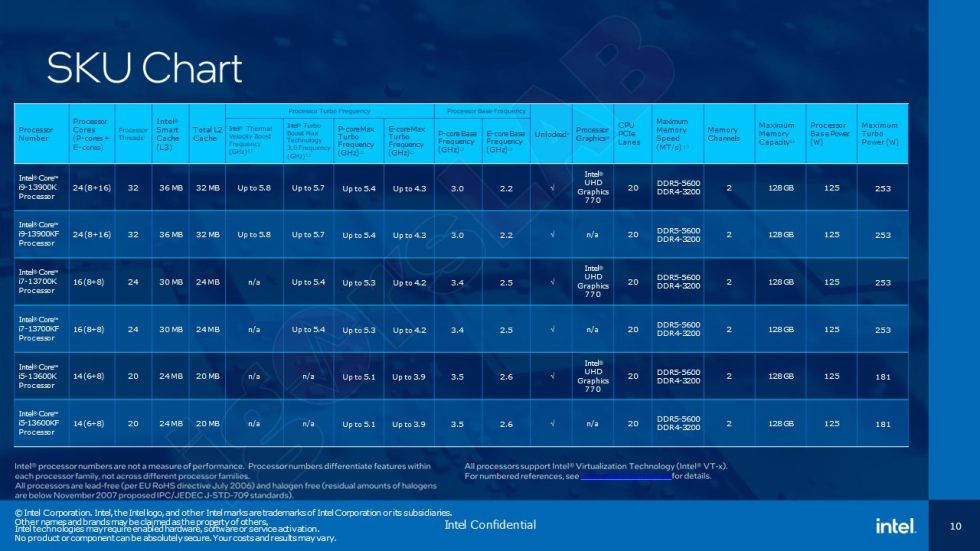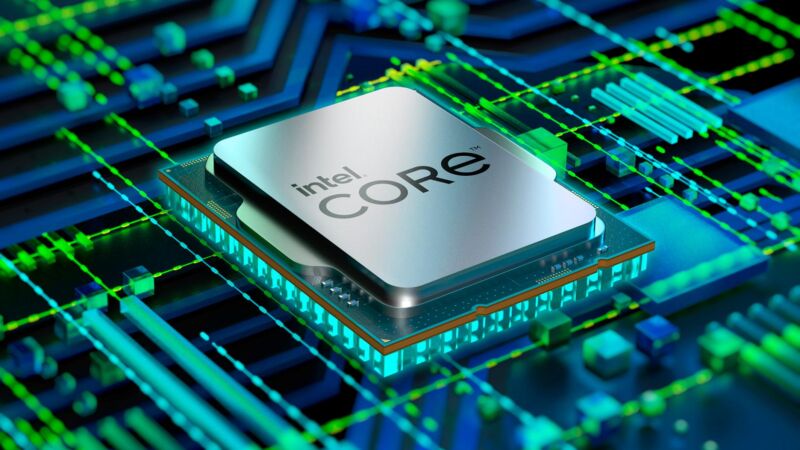Intel is gearing up to release the first products in its 13th-generation Core processor family, codenamed Raptor Lake. Among the topline facts that the company announced at its Intel Technology Tour is that at least one member of the Raptor Lake family will be capable of hitting 6 GHz out of the box (via Tom's Hardware). Core counts and architectural improvements are generally more important than clock speed when it comes to increasing a CPU's performance these days, but after many years hanging out in the 5 GHz range, it's neat to hit the next digit.
As for what this means for performance, Intel is saying that Raptor Lake will perform roughly 15 percent better in single-threaded tasks and 41 percent better in multi-threaded workloads than the current 12th-generation Alder Lake chips. Clock speed is more important for boosting single-threaded performance, while adding more cores is usually the best way to improve multi-threaded speeds.
It's not clear which of the CPUs will be capable of hitting 6 GHz or under what circumstances or for how long. An Intel SKU chart published by Igor's Lab suggests that the Core i9-13900K will top out at 5.8 GHz, though it's possible that it's capable of further boosting beyond that.

The SKU chart also confirms what we've heard from other leaks—despite an architectural similarity to current Alder Lake CPUs, Intel is boosting performance by doubling the maximum number of E-cores in its top-tier CPUs, from eight to 16. The i5-12600K, which included four E-cores, will also be replaced by a Core i5-13600K that includes eight. And if the rest of that leaked desktop CPU lineup holds true, some lower-end Core i5 processors that shipped with no E-cores in the 12th generation will get four or eight in the 13th generation.
This SKU chart also indicates that these top-end Raptor Lake CPUs will include other changes, including increased amounts of L2 and L3 cache available. It also looks like the Maximum Turbo Power consumption of all the chips is going up by between 12 W and 63 W—from 241 W to 253 W for the Core i9, from 190 W to 253 W for the Core i7, and from 150 W to 181 W for the Core i5. The base power for all the chips stays level, at 125 W.
Those maximum power consumption numbers don't necessarily mean that all Raptor Lake CPUs will consume more power than their Alder Lake counterparts—that will depend on the specific power settings that your motherboard or PC manufacturer chooses to use. It does mean that a Raptor Lake CPU with high power limits and adequate cooling will need more power and better cooling than a similarly configured Alder Lake CPU when running sustained workloads, though.
People old enough to remember installing Windows 98 will recall that clock speed bragging rights were a big deal in the early 2000s. Intel planned to boost its Pentium 4 CPUs from the mid-1 GHz range all the way up to 10 GHz by 2005, but the architecture was just barely able to hit 4 GHz before heat and power consumption both became so high that further increases became untenable (the company's first attempt at a 4 GHz CPU never saw the light of day).



3175x175(CURRENT).thumb.jpg.b05acc060982b36f5891ba728e6d953c.jpg)
Recommended Comments
There are no comments to display.
Join the conversation
You can post now and register later. If you have an account, sign in now to post with your account.
Note: Your post will require moderator approval before it will be visible.